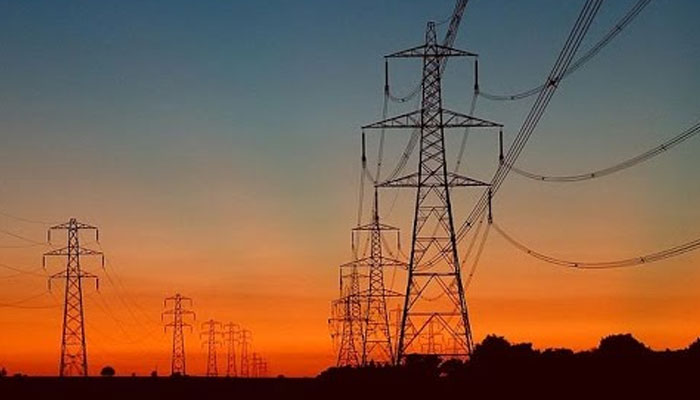End consumers pay Rs190 bn in power tariff due to jump in dollar
ISLAMABAD: The power consumers have so far paid a whopping Rs190 billion in the tariff in just two years of the incumbent government just because of the dollar appreciation that went up by over 40 percent against the rupee.
Pakistan’s power sector is heavily dependent on imported fuel that include diesel, furnace oil, LNG and coal for electricity generation and the tariff is in cents not in rupees and more importantly the capacity payments to IPPs is also in dollar terms. “We have to pay capacity payments of Rs850 billion in the current financial year 2020-21 and if dollar value was not increased, then the government would have to pay Rs650 billion in the head of capacity payments in the current financial year,” a senior official at the Power Division told The News.
The official said that capacity payments that end consumers will pay in the current fiscal stand at Rs850 billion will swell to $1 billion (Rs1.68 trillion) in just next 3 to 4 years. When asked if the circular debt soars to Rs4000 billion in 2025 as has been predicted in the study done by Engro Corporation, he responded saying that the country is virtually heading towards the figure of Rs4000 billion if the inefficiencies are not eroded and corrective measures are not taken.
To a question, he said that in the last financial year 2019-20, circular debt increased by Rs538 billion and in case the situation is not improved, then in the years to come the monster of circular debt will alarmingly balloon to a level where the economy will get damaged the most.
While highlighting the reasons for 100 percent surge the circular debt that has increased to Rs2.219 trillion from Rs1.1513 trillion in June 2018, the official said that there are structural flaws in tariff and the time lag in notification of monthly fuel adjustment, quarterly fuel adjustment and annual tariff is causing the increase in circular debt. He said that prior to freezing the tariff incase from November 2019, there was a time lag of two months in monthly fuel adjustment, 6 month in quarterly tariff and one year time lag was in annual tariff and still the situation has worsened to this effect.
The official said that because of time lag in the said tariff the circular debt is on the rise. He also pinpointed some more structural flaws and inefficiencies at operational level, saying that suppose Central Power Purchase Agency (CPPA) buys electricity from power houses of Rs100 then after deduction of transmission and distribution losses and impact of time lag in tariff notification it is unable to provide to DISCOs the electricity valuing Rs100, rather it gives the electricity of Rs70 to DISCOs instead of Rs100. The DISCOs bill the electricity of Rs70 to end consumers and because of their 25 percent inefficiency such as line losses and theft, they recover the amount of Rs45 out of the electricity billed at Rs70 that was originally purchased in Rs100 by CPPA. ‘This means that the loss in operational level stands at Rs55 out of electricity purchased at Rs100.’
-
 Prince Harry Hopes To Show Archie, Lilibet Where He 'grew Up'
Prince Harry Hopes To Show Archie, Lilibet Where He 'grew Up' -
 Kristin Davis Dicusses Fate Of Her Sex And The City Character
Kristin Davis Dicusses Fate Of Her Sex And The City Character -
 Zara Larsson Steps Up Criticism Against 'evil' Policies
Zara Larsson Steps Up Criticism Against 'evil' Policies -
 Adam Sandler Jokes About Aging As He Accepts Career Honour
Adam Sandler Jokes About Aging As He Accepts Career Honour -
 Royal Stalker Cases Increase Following Harry, Meghan's Marriage: Report
Royal Stalker Cases Increase Following Harry, Meghan's Marriage: Report -
 Sarah Ferguson Eyes Princess Diana’s Private Letters In Bid To Secure Future
Sarah Ferguson Eyes Princess Diana’s Private Letters In Bid To Secure Future -
 Andrew Plots Secret Sales Of Royal Jewels Amid Royal Lodge Eviction
Andrew Plots Secret Sales Of Royal Jewels Amid Royal Lodge Eviction -
 Abbott Elementary Star Chris Perfetti Hints At What To Expect From Season 5
Abbott Elementary Star Chris Perfetti Hints At What To Expect From Season 5 -
 Prince William Always Ready To Step Up: ‘He’s Barely Able To Contain His Fury When Kate’s Involved’
Prince William Always Ready To Step Up: ‘He’s Barely Able To Contain His Fury When Kate’s Involved’ -
 Florida Woman ‘tricked Innocent Movers Into Helping Her’ $7k Burglary: Report
Florida Woman ‘tricked Innocent Movers Into Helping Her’ $7k Burglary: Report -
 Harry Deserves Top Protection As King Charles’ Son, Prince William’s Brother
Harry Deserves Top Protection As King Charles’ Son, Prince William’s Brother -
 Meghan Markle Receives Key Advice As Experts Warn She’s Doing Too Much
Meghan Markle Receives Key Advice As Experts Warn She’s Doing Too Much -
 Kelly Clarkson Weighs In On Life Without The Father Of Her Children
Kelly Clarkson Weighs In On Life Without The Father Of Her Children -
 Paul Mescal, Gracie Abrams Committed To 'long Distance' Relationship: Source
Paul Mescal, Gracie Abrams Committed To 'long Distance' Relationship: Source -
 Street Fight Turns Bloody As Innocent Bystander Shot In The Face
Street Fight Turns Bloody As Innocent Bystander Shot In The Face -
 Tom Blyth Shares His Two Cents On The Importance Of Rom Coms
Tom Blyth Shares His Two Cents On The Importance Of Rom Coms




